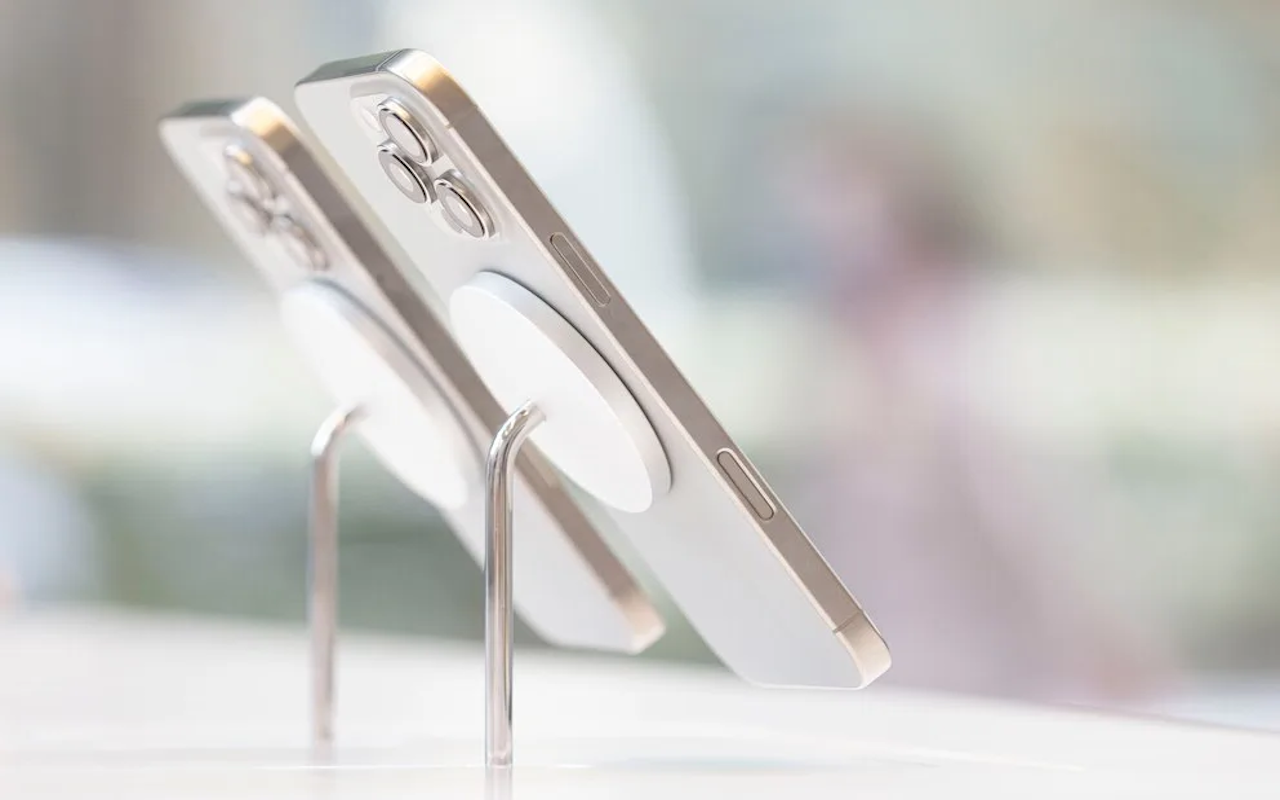In the fiercely competitive smartphone market, battery life remains a paramount concern for users. Apple, a company known for its meticulous design and efficiency, has been steadily improving the endurance of its flagship devices.
With the release of the iPhone 16 Pro Max, we witnessed a notable leap in battery performance, a welcome enhancement after several years of relatively stagnant improvements in this area. This advancement was largely attributed to a dual strategy: incorporating a physically “larger battery” and coupling it with a “more efficient chip.” This combination allowed the iPhone 16 Pro Max to deliver extended usage times, a crucial factor for demanding users.
Looking ahead, the technological grapevine is buzzing with exciting predictions for the upcoming iPhone 17 Pro Max. All signs point to Apple pushing the boundaries of battery capacity even further, aiming to solidify its position at the forefront of smartphone endurance. This strategic move comes at a time when user demands on smartphone batteries are escalating. Modern mobile applications, particularly “power-hungry gaming, which is becoming increasingly popular on smartphones,” are placing unprecedented strain on internal power cells. This trend has already led many Android device manufacturers to equip their top-tier smartphones with batteries “beyond the 5,000 milliampere-hour (mAh) mark” to meet user expectations.
Apple, traditionally known for achieving comparable runtimes with smaller batteries due to its highly optimized iOS ecosystem and custom silicon, appears ready to meet the new challenge head-on. For the much-anticipated iPhone 17 Pro Max, it is widely rumored that Apple is “planning a similarly large battery,” signaling a significant shift in its approach to maximize power autonomy for its most premium device. This strategic pivot aims to cater to the evolving needs of its user base, ensuring the iPhone remains a leader in both performance and endurance.
The Capacity Leap: More Power for the Next Pro Max
Apple’s commitment to enhancing battery life in its Pro Max lineup is becoming increasingly evident with each iteration. The iPhone 16 Pro Max already demonstrated impressive efficiency, managing to outperform a significant competitor despite having a smaller power unit. In comparative “runtime test[s], the iPhone 16 Pro Max beats the Samsung Galaxy S25 Ultra—despite having a smaller built-in battery (4,676 mAh vs. 5,000 mAh).”
This achievement highlights Apple’s superior software and hardware optimization, allowing more efficient power consumption. However, to maintain this competitive edge and meet the growing demands of users, Apple is poised to make a substantial increase in battery capacity for its next flagship. “To remain at the top with the iPhone 17 Pro Max, Apple is likely to further increase the battery capacity.”
Over the past five generations of iPhones, there has been a steady, albeit sometimes subtle, increase in battery capacity, demonstrating a long-term trend. The capacity has “increased by nearly 27 percent—from 3,687 mAh in the iPhone 12 to the current value” in the iPhone 16 Pro Max. This incremental growth has been a testament to Apple’s design philosophy, balancing battery size with device aesthetics and thermal management. However, the upcoming jump for the iPhone 17 Pro Max suggests a more aggressive expansion.
Detailed information regarding this significant increase has come from a relatively well-known source within the tech community. The leaker “Instant Digital” shared precise battery size details for the new iPhone flagship on the popular Chinese microblogging platform, Weibo. According to this credible source, the “iPhone 17 Pro Max is expected to be equipped with a 5,000-mAh battery.” This would mark a truly substantial upgrade compared to its predecessor.
Such a capacity would represent “about 7 percent more capacity” than the iPhone 16 Pro Max’s 4,676 mAh battery. This increase, combined with other efficiency improvements, is anticipated to deliver an unprecedented level of endurance for an iPhone. The move to the 5,000 mAh threshold signifies Apple’s direct response to growing consumer needs for longer battery life, especially as mobile gaming and other power-intensive applications become more prevalent.
Design Changes Hint at Larger Battery
The speculation surrounding a significantly larger battery in the iPhone 17 Pro Max isn’t just based on a single leak; it’s corroborated by earlier insights into the device’s physical dimensions. Information regarding the potential design changes emerged months ago, providing an early indication of Apple’s strategic intent.
As early as “March of this year, the well-informed leaker “Ice Universe”—also on Weibo—posted about the case size of the iPhone 17 Pro Max.” This particular leaker has a strong track record of providing accurate information regarding upcoming smartphone designs and specifications, lending significant credibility to their claims. The details shared by “Ice Universe” were particularly insightful, as they highlighted a subtle yet important alteration to the iPhone’s traditionally sleek profile.
According to these leaks, the iPhone 17 Pro Max is “expected to grow from 8.25 mm in the 16 Pro Max to 8.725 mm in thickness.” While this might seem like a minor increase in thickness on paper—less than half a millimeter—in the world of smartphone design, where every fraction of a millimeter is meticulously engineered, such a change is highly significant. This slight increase in chassis depth is not arbitrary. Even at the time of the initial leak, this subtle yet noticeable increase in thickness “was considered an indicator that Apple would use the additional space for a larger battery.” Smartphone manufacturers constantly strive for thinner designs, so any decision to increase a device’s thickness typically points to a compelling functional reason.
In this case, accommodating a higher-capacity battery is a prime motivation. A larger battery cell would naturally require more internal volume, and a slightly thicker chassis would provide the necessary room without compromising other internal components or introducing complex engineering challenges. This early leak, combined with more recent battery capacity revelations, paints a consistent picture of Apple prioritizing battery endurance in its next-generation Pro Max flagship, even if it means a slight departure from ultra-thin design trends.
Unprecedented Endurance: Setting New iPhone Benchmarks
The combination of a physically larger battery and ongoing efficiency improvements is set to establish new benchmarks for endurance in the iPhone lineup. The current generation already offers impressive battery life, but the iPhone 17 Pro Max is poised to elevate this to an unprecedented level.
Apple officially states a battery life of “33 hours” for the iPhone 16 Pro Max for video playback. This figure represented a significant improvement, marking “the first increase since the iPhone 14 Pro Max,” which was rated at “29 hours.” This jump of four hours highlighted Apple’s renewed focus on extending practical usage time for its users, especially those who rely heavily on their devices throughout the day. The enhancements in the iPhone 16 Pro Max were well-received, but the forthcoming model promises to push these limits even further.
With the integration of what is expected to be “the largest battery in iPhone history,” the iPhone 17 Pro Max is not just promising more battery life; it is promising “even more endurance.” This implies a significant leap that could translate into tangible benefits for users, such as prolonged gaming sessions, extended video playback, or simply the confidence of getting through a full day, or even two, on a single charge without worrying about finding an outlet.
Industry analysis and reliable leaks further support these expectations. According to “MacRumors,” a highly respected source for Apple news and rumors, it is entirely “conceivable that the device could run for 35 hours or longer on a single charge.” This projection is not solely based on the increased battery capacity. It also factors in crucial advancements in the device’s internal components. The anticipated “improvements in energy efficiency in the A19 Pro chip” are paramount. Apple’s custom-designed A-series chips are renowned for their industry-leading performance-per-watt, meaning they deliver powerful processing while consuming minimal energy. The A19 Pro is expected to continue this trend, optimizing power use across all functions.
Additionally, the integration of the “new Snapdragon X80 modem” will play a role. Modems, responsible for cellular connectivity, can be significant power drains. A more efficient modem will reduce energy consumption during data transmission and reception, further contributing to overall battery longevity. These synergistic improvements—a bigger battery, a more efficient processor, and an optimized modem—are expected to make the iPhone 17 Pro Max a true leader in smartphone endurance, setting a new standard for what users can expect from a premium mobile device.
A Tale of Two iPhones: Contrasting with the iPhone 17 Air
The strategic decision to equip the iPhone 17 Pro Max with an enormous battery stands in stark contrast to another rumored device set for release in the same timeframe: the ultra-thin iPhone 17 Air. This juxtaposition highlights Apple’s efforts to cater to diverse consumer preferences, even if some of these design philosophies prove more popular than others.
The “giant battery in the iPhone 17 Pro Max” is a bold statement about prioritizing endurance and performance. It signals Apple’s understanding that a significant segment of its premium user base values extended battery life above all else, especially as devices become central to work, entertainment, and communication. This focus on maximizing power is a direct response to real-world usage patterns, particularly the growing demand for mobile gaming and sustained multimedia consumption.
However, on the other end of the spectrum, Apple is reportedly exploring a very different design philosophy with the “also-expected ultra-thin iPhone 17 Air.” This model is rumored to be set for release in fall 2025, alongside the Pro Max. The core appeal of the iPhone 17 Air would be its exceptionally slim profile, potentially making it the thinnest iPhone ever. To achieve such a svelte design, compromises are inevitable, and battery capacity is often the first casualty.
Indeed, this model is expected to come with a “capacity of only 2,800 mAh.” This figure is “significantly less than all current iPhone models offer,” which typically hover in the 3,000-4,000 mAh range even for standard models, let alone the Pro variants. The iPhone 17 Air would represent a return to prioritizing extreme thinness over robust battery life, a trend seen in some past smartphone designs.
The market’s reception to ultra-thin devices with compromised battery life has been mixed, leaning towards caution. As the article notes, “However, the demand for smartphones that sacrifice battery capacity for thinner cases seems to be lower than manufacturers had anticipated.” Consumers, it appears, have largely moved past the novelty of ultra-thin phones when it comes to practical, everyday usage. Real-world experience has shown that a truly thin device often comes with the caveat of needing frequent recharges, which can quickly become frustrating.
Samsung, a major competitor, recently experienced this market sentiment directly. “At least Samsung had to realize this with the Galaxy S25 Edge, which apparently fell significantly short of sales expectations.” The Galaxy S25 Edge, rumored to be a thinner variant, likely prioritized form over function in a way that didn’t resonate with a broad consumer base. This suggests that while design aesthetics are important, practical considerations like battery life often outweigh extreme thinness for the average user.
Apple’s decision to offer both the power-packed iPhone 17 Pro Max and the ultra-thin iPhone 17 Air showcases its attempt to capture different segments of the market, but the market’s clear preference for endurance over extreme slimness might make the iPhone 17 Pro Max the more compelling offering.








